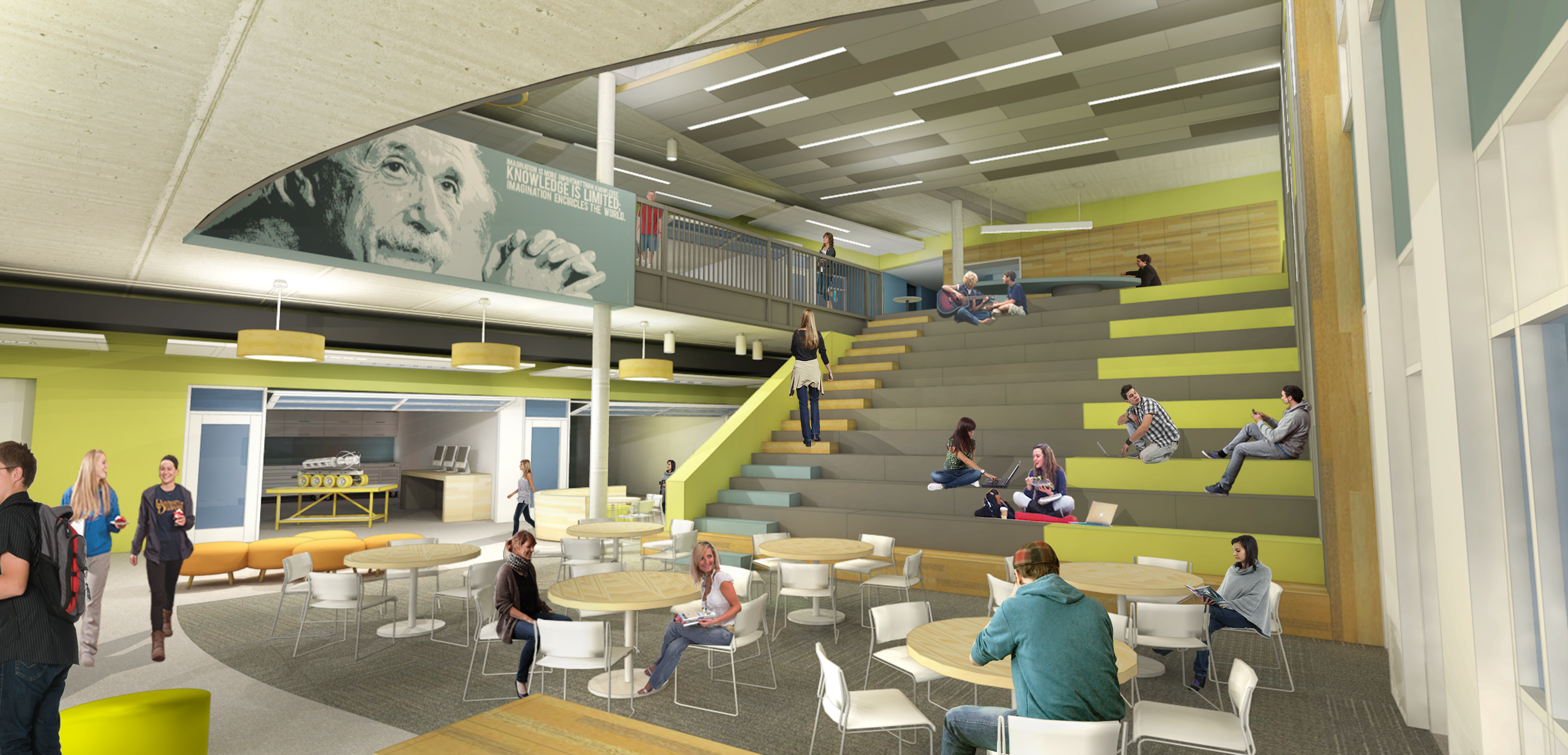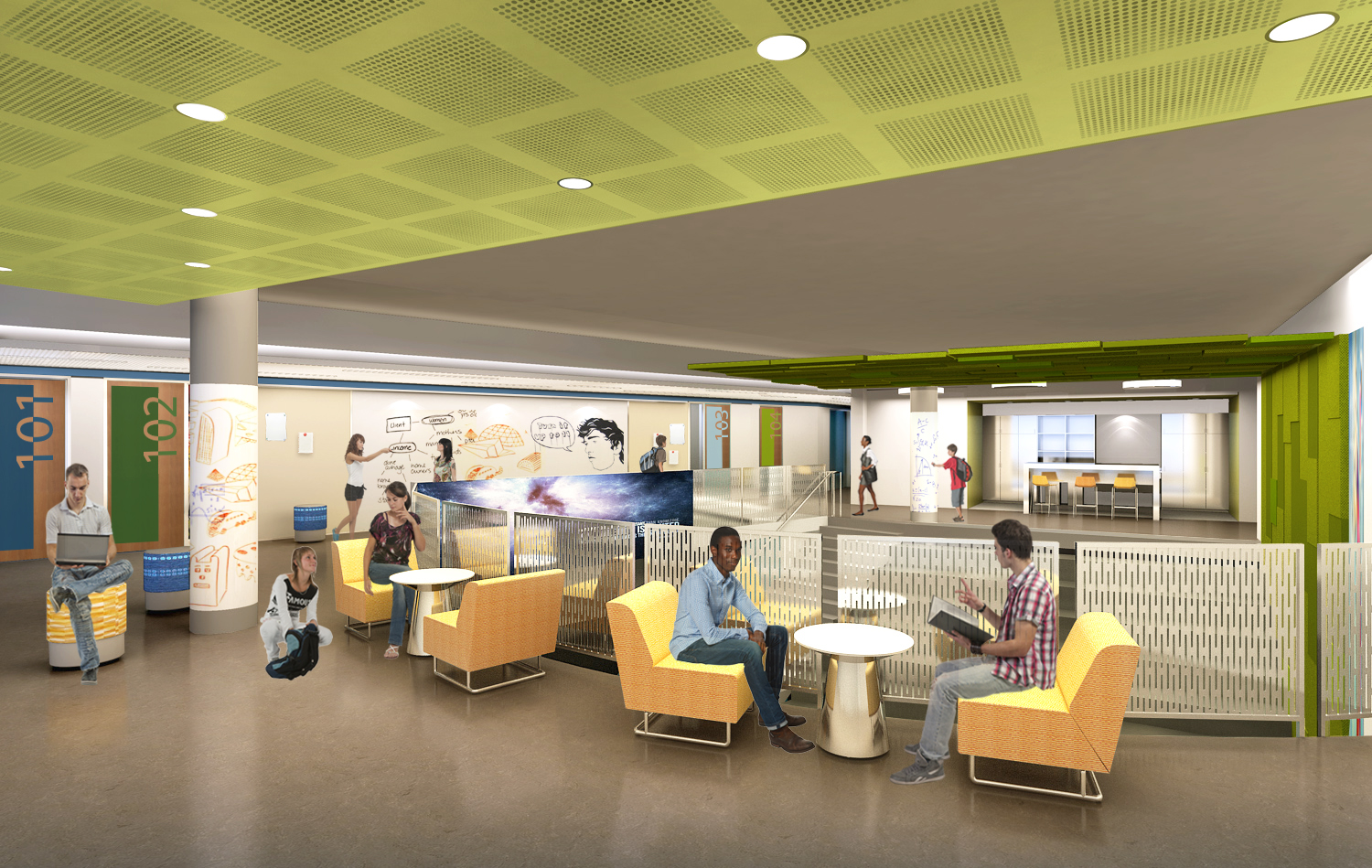In part two of our three part series, Arnold Levin explores what the workplace design and strategy profession can learn from design initiatives adopted by schools that focus on children with learning differences. Read part one of the series here and part three here.

In the first article of this series, I set forth my hypothesis that learning differences (LD) represent both an overlooked area of attention by workplace strategists and designers in our approach to developing workplace strategies. LD can also be a lens though which we can better understand the relationship between workplace design and organizational performance, based on the notion that there is a direct correlation between learning styles and work styles.
In this second article, I will expand on the importance of understanding the nature of learning differences, it’s ability to be a roadmap to better understand the importance of learning styles, and how the workplace design and strategy profession can learn from the design initiatives being adopted by many schools that focus on children with learning differences.
I will also begin the discussion around recognizing that the traits found in individuals with LD are those very same traits that lead to entrepreneurship and innovation, which are attributes that many organizations are striving to capture. The educational facilities that have been creatively designed for children with LD provide insights into what needs to be part of the today’s workplace design strategies and solutions.
The traits found in individuals with LD are those very same traits that lead to entrepreneurship and innovation, which are attributes that many organizations are striving to capture.
Progressive schools that focus on creating learning environments for children with LD recognize that LD takes many forms and that no two children with, for instance, dyslexia, learn in the same ways. The area of LD involves a range of issues including dyslexia, ADD, ADHD, dyscalculia, and dysgraphia. These schools have found that learning is reflective of a child’s learning style, whether it’s audio, visual, or kinetic.
Designing a curriculum, educational strategy, and physical learning environment involves recognizing these differences and creating strategies and environments that reflect those differences and enable choice. It reflects the notion that no one educational strategy fits all students, and that the role of flexibility and choice are fundamental to designing a successful learning environment.
It’s not a coincidence that this is sounding much like the what is being discussed in the world of workplace design strategy around choice for employees as being integral to how we need to approach the design of innovative work environments.
The idea that choice is becoming an acknowledged component of not just learning environments for children with LD, but in all levels of education, is in part a recognition of the importance of learning styles in an educational environment that is shifting its emphasis from “teaching” to “learning”. I will discuss this in greater detail in part three.


An excellent example of how schools dedicated to creating learning environments for children with LD is The Lab School of Washington, which I introduced in part one. It is the school where my daughter went from 3rd grade through 5th grade, and it established for her a path to success through an educational program designed around her particular learning styles.
The Lab School has been a pioneer in teaching children with LD. Its founder, Sally Smith, created the school with the belief that identifying one’s learning style was central to a child’s learning, and that children with LD in its various forms tended to exhibit a high degree of creativity in their learning and in their abilities. The school was designed around using art and drama as a means to learn and recognizing the importance of choice in the learning pedagogy. For years since its founding, the school operated out of a collection of old castle-like buildings and was transformed though it’s teaching style and learning environments that were created within. More recently, the school embarked on designing and delivering a new school building within the campus for its high school students.
In discussing the design process with its current Head of School, Dr. Katherine Schantz, she talked about how the new building was the result of many focus groups with students, along with observations around work habits and understanding lessons from the school’s success stories. The most fundamental area of importance that was cited as a result of this process was that in order to be productive, the students required choice as the foundation for their learning environment.
Six more key insights emerged from their investigation:
- Learning environments need to include a variety of venues and the mobility to modify spaces for individual needs.
- Different tasks require different settings.
- Learning typologies need to be designed around a variety of spaces that support different activities, as well as learning styles: small enclosed spaces for focus work, flexible seminar rooms, and wide-open, multi-purpose spaces.
- The learning environments need to be designed around different levels of stimulation including visual, auditory, and mobile, and these need to cover a range from over-stimulating to the absence of stimulation (something our current workplace thinking does not adequately address).
- There must be different ranges of furniture that are all easily re-configurable and are able to function in traditional sitting arrangements, as well as in more relaxed and informal settings.
- Different tools for expression are required, including expansive writing spaces for ideas, maker spaces to enable 3D representation of ideas, and a range of low- to high-tech tools to support the range of learning styles and needs of different students.
These design solutions are no different than many proposed workplace design strategies and solutions, but they begin to demonstrate the correlation between learning styles as exemplified by individuals with LD and work styles. By understanding the analysis and recommendations from The Lab School, one comes away with a more meaningful rationalization of the benefits and needs around choice in the workplace and the corresponding activity-based strategies. The relationship between learning styles, learning performance, and work styles places the need for choice squarely in the perspective of enabling productivity and performance. It moves the recommendations away from “just another trend” to more demonstrable strategic value.
To further support this notion, and so as not to marginalize its importance with the potential rationalization that “this is just appropriate for people with LD”, there is a proven connection between individuals with LD and those very qualities that organizations are seeking to foster and enable innovation. In 2007, Julie Logan, a professor of entrepreneurship at Cass Business School in London published a study of 102 entrepreneurs in the U.S. The results showed that 35 percent of those studied identified themselves as being dyslexic. Her findings were that dyslexic entrepreneurs were more likely to own several companies and to grow other organizations more quickly than those who were not dyslexic. Logan’s broader implications from her research were that many of the coping skills dyslexics learn in their formative years result in so-called “best practices” for a successful entrepreneur.
The relationship between learning styles, learning performance, and work styles places the need for choice squarely in the perspective of enabling productivity and performance. It moves the recommendations away from ‘just another trend’ to more demonstrable strategic value.
This idea has been equally put forth by Sally Shaywitz, who authored the book Overcoming Dyslexia, and is the coordinator of the Yale Center for Dyslexia & Creativity. She tells a story about being invited to Davos to present at the World Economic Forum. At first, she was unsure about why she was invited as an educator to present to some of the world’s most influential thinkers on innovative thinking. But she soon realized that many in the audience had a profound interest in the subject, because many of those very same successful entrepreneurs in attendance were also dyslexic. She found that the number of individuals in the audience who were dyslexic was extremely high.
In further research, she began to see the relationship between dyslexia and the strengths of dyslexics with higher cognitive and linguistic functioning, reasoning, and conceptual abilities resulting in higher abilities in problem solving. From Albert Einstein and Charles Schwab to John Chambers of Cisco Systems, as well as Richard Rogers, all are dyslexic and considered innovators in their respective fields.
The key lesson and insight here for the world of workplace strategy and design is that today’s businesses are dependent on incorporating ways of innovative thinking into the culture of their organizations.
David Rose is a professor of neuropsychology at Harvard University and the founder of the Center for Applied Technology (CAST). In his work, he talks about the value of self-knowledge that’s developed through recognizing one’s learning preferences.
He has said that many dyslexic students are now, more than ever, identifying with their “neurodiversity” and that they are quite cognizant of how this self-knowledge increases their productivity at school. If this is true within learning environments, why should not the same be true for workplace environments? If we stop just relying on the trends within our industry that simplistically relate serendipitous collaboration to innovation, and look at the individuals who actually create and enable innovation, as well as the types of learning and workplace environments that best support them, we come away with more substantive arguments for choice and activity-based design.
In a business environment where clients are always asking for evidence that a particular workplace strategy will work, we can look no further than schools like The Lab School of Washington for living examples and proof.



Thank you for your three part series on learning differences and workplace design. I’m very glad to have someone in the industry addressing this. I have dyslexia and ADHD. I’ve worked on public policy and legislation for a federal agency for a number of years. In my experience, all staffers have a unique way to perform at their best. It would be good for various tools and office set-ups to be available to everyone. The experience of creating appropriate spaces when you have a learning difference ranges widely depending on your specific managers and the constraints that they have on them. I disclosed my situation 15 years ago. Some managers see this no big deal. They will help you get anything as long as the money holds out and their are no technology conflicts. At the other end of the spectrum, a manager can see you as semi-retarded and posing as a true professional.
Thanks for your comment, C.G.! We’re glad to know that the series is resonating.